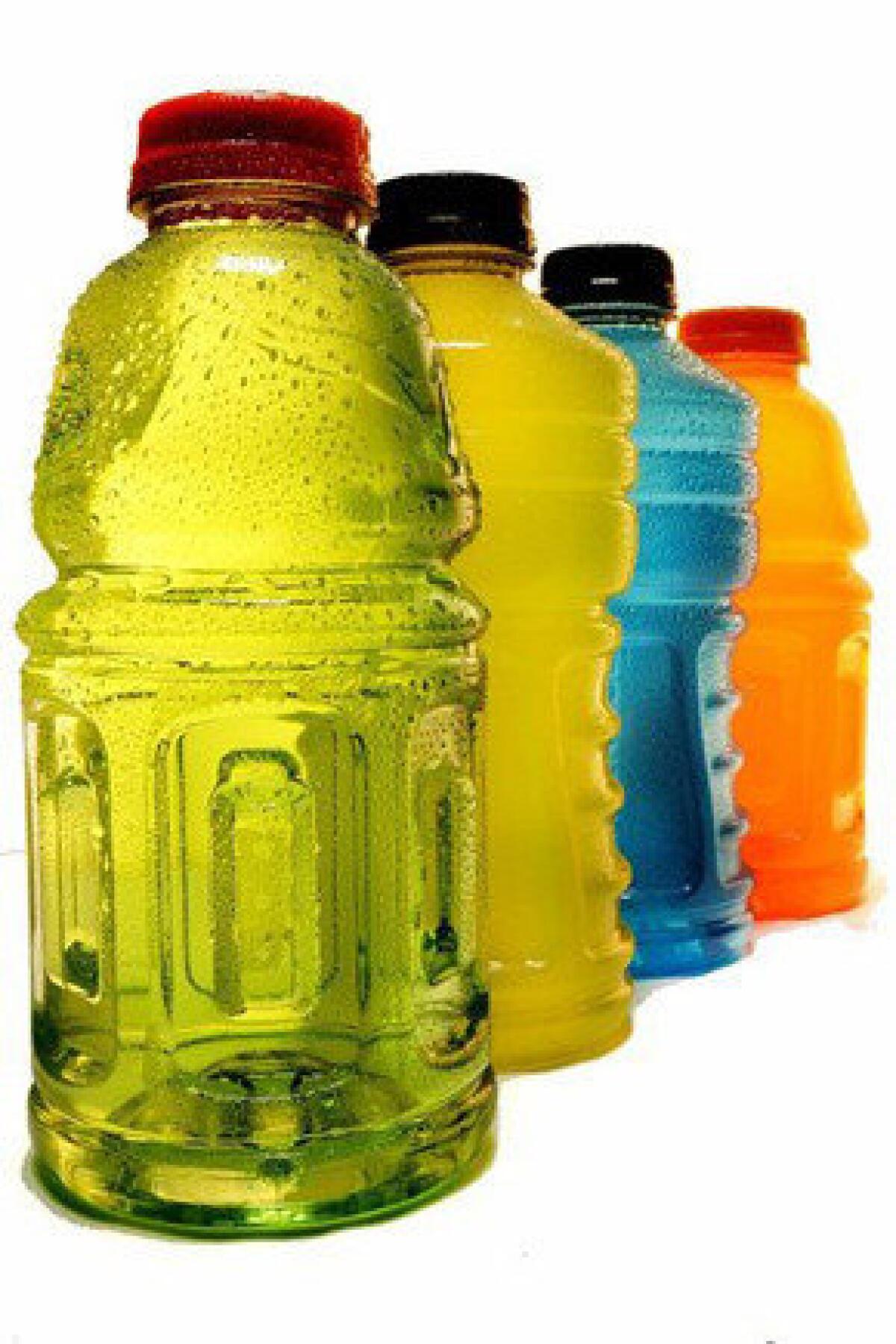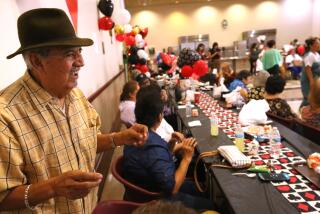Related story: California kids drinking less soda, but consumption among teens is up

- Share via
California kids under 12 are drinking fewer sodas and sports drinks than they were a few years ago, but more teenagers are downing at least one sugar-sweetened beverage a day than in 2005 to 2007, according to a report Thursday.
Forty-one percent of children ages 2 to 17 drank at least one soda or other sugar-sweetened beverage a day in 2011-2012, an 11% drop from 2005-2007, the report says. Within those ages, 65% of people ages 12 to 17 drank at least one such beverage, up from 60% in 2005-2007, an increase that the report called “particularly troubling.”
Among children 6 to 11, the rate of daily consumption was 32%, down from 43% in 2005-2007; and among children 2 to 5 years old, it was 19%, down from 27% in 2005-2007.
“Important policies have been adopted to protect the youngest children. More changes are needed to help teens choose water and milk,” Matthew Sharp, senior policy advocate at the California Food Policy Advocates, said in response to the report. His organization has worked to set nutrition standards in preschools.
“We’re making some progress with the younger children, and I think that’s really good news, because it shows that when parents are making the decisions, they’re making good decisions,” said Dr. Jonathan Fielding, the director of the Los Angeles County Department of Health.
Teenagers are more independent, Harold Goldstein, one of the report’s authors and the executive director at the California Center for Public Health Advocacy, said by telephone. “There’s a lot that needs to be done.”
Adolescents are drinking 23% more sports and energy drinks than in 2005-2007, the report notes.
The report is based on interviews with more than 40,000 California households, conducted for the California Health Interview Survey.
Chuck Finnie, who was the spokesman for the campaign against a failed beverage tax in Richmond, Calif., noted that the progress was made without new taxes.
“The important takeaway for policymakers at the local level in California and Sacramento, where taxes on sugar-sweetened beverages have been offered as a solution to obesity and related problems is that taxes are not needed and aren’t the solution,” he said by telephone.
The American Beverage Assn., an industry group based in Washington, also responded to the report, raising the possibility that while the percentage of teens drinking soda rose, those teens are drinking fewer beverages a day than in the past.
“Across America, the amount of sugar-sweetened beverages consumed by children and adolescents has declined significantly -- by as much as 42% according to research published in the American Journal of Clinical Nutrition -- due in part to industry innovation,” the association said in a statement. “Our member companies offer a wide variety of beverages, from soft drinks and 100% juice to teas and flavored waters, all of which can be part of a balanced diet. Many of these beverages are low- and no-calorie options, in smaller portion sizes and include clear calorie labels to help consumers of all ages make informed choices.”
The report notes that sodas, sports drinks and other sugar-sweetened beverages are the single largest source of added sugar for Americans. From 1977 to 2002, Americans increased their caloric intake from soft drinks by more than 200%, but research shows that intake has declined since 2000, the report says.
“Soda and other sugary drinks contribute half a billion empty calories a day to California’s costly childhood obesity crisis,” Robert Ross, president and chief executive of the California Endowment, which funded the study, said in a statement.
Nearly 40% of California youth are overweight, and officials have predicted that a third of the babies born in 2000 will develop diabetes during their lives. Type 2 diabetes is strongly associated with diet.
The report breaks down consumption by counties and by ethnicity.
Consumption dropped across ethnic groups in younger children, but rose for teenagers, with 74% of African American teens reporting drinking at least one sugar-sweetened beverage a day and 73% of Latino teens. Asian teens who drank at least one such beverage a day rose from 48% in 2005-2007 to 63% in 2011-2012, the report says.
By county, King with 60% and Fresno with 58%, showed the highest consumption levels, the report says. In Ventura County, the rate for children ages 2 to 11 dropped from 37% to 27%, and the rate for adolescents dropped from 62% to 52%, the report shows.
“We are very excited, because we know the good work we are doing is paying off, Selfa Saucedo, health education manager with the Ventura County Health Department, said in response to the report. The county, she said, has a “rethink your drink” campaign that aims to teach people in after-school programs and the Women, Infants and Children food supplement program, among others, to reduce consumption of sugar-sweetened beverages, in part by suggesting alternatives such as water with lemon slices, and by education.
People “are surprised at the amount of sugar in beverages that are promoted as healthy. Energy drinks, for example, sports drinks, some of the flavored water actually has sugar in it as well,” Saucedo said.
In six California counties, including San Francisco, the daily consumption rate was below 30%. Consumption by adolescents increased in 10 of the 15 largest counties, including Los Angeles and Orange.
“The trend among teens is troubling,” said Susan Babey, a UCLA scientist and the lead author of the report, adding that teenagers are known for risky behaviors and so drink beverages they “know are not healthy.”
“But teens have this notion that they are invincible and the actions that have consequences that don’t happen for a very long time are hard for kids that age to consider. It’s just too far in the future to be meaningful to them,” Babey said.
Most teenagers are not active enough to need to drink a sports drink every day, she said. “But there’s a perception that they’re healthy.”
Policies that removed sodas from vending machines and school stores statewide excluded sports drinks.
“We need to plug that loophole,” said Goldstein of the California Center for Public Health Advocacy. He said he sees “banks” of vending machines stocked with sports drinks when he visits high schools. “As if our high school students need to replace their electrolytes because they’re carrying their book bags.”
Goldstein also said that beverage companies spend $382 million a year marketing to teenagers and engage influential celebrities such as singer Katy Perry.
The report suggest several actions, including removing sports drinks from school vending machines and making milk and water easily available at places where young people congregate.
ALSO:Weight loss is better with friends
Take advantage of our hedonistic urges
For weight loss surgery, look at surgeon’s skill







